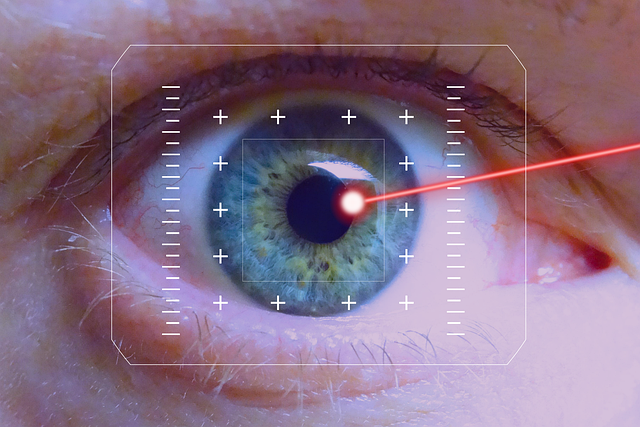Every time we turn on a television or lift a monitor, the first thing we notice is how sharp the image appears. This sharpness is not just a result of the device’s size or the content being displayed; it comes from the fundamental concept of print resolution, translated into the digital domain. While the term “print resolution” traditionally belongs to the world of physical printing, its principles are now essential for understanding how modern displays achieve true detail and how the human eye interprets what is rendered on screen.
From Pixels to Perception: The Basics of Print Resolution on Screens
In printing, resolution is measured in dots per inch (dpi). On screens, the analog is pixels per inch (ppi) or dots per inch (dpi), but the underlying idea is identical: how many tiny color elements can be packed into a linear inch. The higher the density, the smaller each element becomes, making the overall image smoother. However, because the human eye perceives detail in a continuous way, there is a practical limit to how much resolution matters at typical viewing distances. This threshold is often called the “critical resolution,” beyond which additional pixels provide diminishing visual gains.
Pixel Pitch and Its Role in Detail
Pixel pitch is the physical distance from the center of one pixel to the center of the next. A smaller pitch means more pixels in the same area, which translates directly to higher ppi and, consequently, a higher effective print resolution on the screen. Display manufacturers frequently advertise a 0.3 mm pixel pitch for high-end monitors, which corresponds to roughly 1200 ppi on a 27‑inch panel. The smaller the pitch, the finer the details that can be rendered without noticeable pixelation.
Subpixel Rendering: Turning Tiny Pixels into Crisp Lines
Traditional screens treat each pixel as a single color unit, but modern technology exploits the fact that a pixel is actually composed of three subpixels—red, green, and blue. By controlling each subpixel individually, displays can create edges that appear smoother than the pixel grid would otherwise allow. This technique, known as subpixel rendering or RGB stripe rendering, effectively doubles or triples the horizontal resolution for certain shapes and fonts, making text and fine graphics appear more crisp. The technique is especially useful on LCD panels where subpixel arrangement is fixed.
Anti‑Aliasing: Smoothing Jagged Edges
Even with subpixel rendering, the finite nature of pixels causes jagged edges along diagonal lines. Anti-aliasing algorithms, implemented in both GPUs and display firmware, blend edge pixels with surrounding colors to create the illusion of a smoother line. There are several approaches—mSAA, FXAA, and TAA—but all aim to reduce “staircase” artifacts while maintaining sharpness. The proper balance between anti-aliasing strength and perceived detail is critical; too much smoothing can blur fine textures and reduce the effective print resolution of the image.
Color Depth and Its Influence on Detail Perception
Color depth, measured in bits per pixel, determines how many distinct colors a display can show. An 8‑bit panel supports 256 levels per channel, while 10‑bit or 12‑bit panels provide 1,024 or 4,096 levels, respectively. A higher color depth eliminates banding, especially in gradients like sky or hair. When the color transition is smoother, the eye perceives the image as more detailed because subtle variations in hue and luminance are rendered. This is why high‑end monitors and TVs offer 10‑bit panels, ensuring that the print resolution translates into a believable visual experience.
High Dynamic Range (HDR): Expanding the Brilliance Spectrum
HDR extends the luminance range from the darkest shadow to the brightest highlight, allowing displays to showcase a broader spectrum of detail. In traditional SDR content, shadows may appear flat, while highlights are clipped. HDR content leverages local dimming or full‑panel illumination to reproduce a higher peak brightness. When combined with high print resolution, HDR enables viewers to see more detail in complex scenes—such as a textured wall or the subtle glow of a distant galaxy—because the dynamic range aligns with the pixel density.
LCD vs. OLED vs. QLED: How Panel Types Affect Print Resolution
The core technology behind a display influences its maximum achievable print resolution. LCD panels rely on a backlight and liquid crystals to modulate light; they typically support high pixel densities but suffer from backlight bleeding in dark scenes. OLED panels emit light directly from each pixel, offering perfect black levels and high contrast, which enhances perceived detail at lower brightness levels. QLED, a quantum‑dot‑enhanced LED technology, combines a brighter backlight with better color accuracy. Each panel type has its own strengths and trade‑offs, but all share the same goal: to push the print resolution of the displayed image to the limits of human perception.
Mini‑LED and MicroLED: Next‑Generation Backlights
Mini‑LED technology partitions the backlight into thousands of tiny LEDs, improving local dimming precision and allowing for higher peak brightness. MicroLED takes this further by using individual LEDs as the pixel itself. Because each pixel emits its own light, MicroLED offers unmatched contrast ratios, color accuracy, and refresh rates. In addition, the high density of MicroLEDs directly translates to an ultra‑high print resolution, enabling displays that can render incredibly fine detail while maintaining energy efficiency and longevity.
Refresh Rate and Temporal Resolution
Temporal resolution, measured in refresh rates (Hz), is another dimension of detail that complements print resolution. A 120‑Hz or 240‑Hz display can render motion with greater smoothness, reducing motion blur and judder. This temporal clarity is especially important for gaming, sports, or high‑speed footage. While spatial print resolution deals with static detail, refresh rate ensures that dynamic scenes remain sharp and that the human eye perceives each frame with minimal ghosting. Together, spatial and temporal resolution provide a complete picture of how modern displays achieve true detail.
Scaling and the Role of GPUs
Content is rarely produced at the exact resolution of the target display. As a result, scaling algorithms—whether implemented in GPUs or display firmware—play a pivotal role in maintaining print resolution fidelity. Modern GPUs use advanced interpolation techniques such as neural upscaling or super‑resolution to convert lower‑resolution content into higher‑resolution frames that match the display’s native pixel count. The quality of scaling determines whether the final image preserves edge sharpness, texture detail, and overall visual realism.
Color Calibration: Making Sure the Printed Detail Matches Reality
Even the most advanced hardware cannot deliver true detail if the colors are misaligned. Professional calibration tools adjust gamma, color space, and luminance to match industry standards such as sRGB, DCI‑P3, or Rec. 2020. When a monitor’s color profile is accurate, each pixel’s value matches the intended output, allowing the print resolution to be perceived correctly. Calibrated displays also help avoid color banding and ensure that fine gradients, which rely on subtle luminance differences, are rendered faithfully.
Input Lag: The Final Barrier to Detail Perception
Input lag—the delay between a user’s action and the display’s response—can affect how we perceive sharpness and motion. A high input lag can make a display feel sluggish, obscuring the true detail of fast‑moving objects. While most modern TVs and monitors now achieve input lags below 20 ms, the difference is significant for competitive gaming or professional editing, where even a few milliseconds can impact performance and the subjective clarity of an image.
Future Horizons: What’s Next for Print Resolution in Displays?
The trajectory of display technology points toward even higher pixel densities, larger color gamuts, and more precise control over light at the subpixel level. Emerging research in quantum‑dot arrays, light‑field displays, and programmable metasurfaces promises to blur the line between spatial and temporal resolution further. Moreover, as machine learning refines scaling and upscaling techniques, even lower‑resolution content may be rendered with a fidelity that rivals native hardware. Ultimately, the quest for true detail will continue to push the boundaries of what we consider “print resolution” in the digital age.
In Summary
Understanding how TV and monitor displays achieve true detail requires a multifaceted look at pixel density, subpixel rendering, anti‑aliasing, color depth, HDR, panel technology, refresh rates, scaling algorithms, color calibration, and input lag. Each factor interplays to ensure that the printed resolution of the image on the screen matches what the human eye can resolve. As display technologies evolve, the definition of print resolution will adapt, but the core principle remains: more precise, more accurate, and more faithful representation of the visual world.




